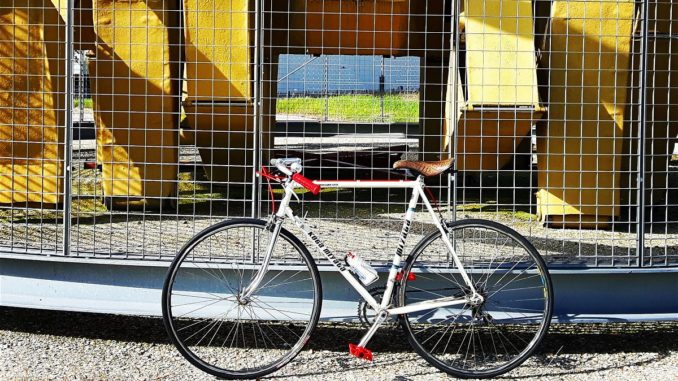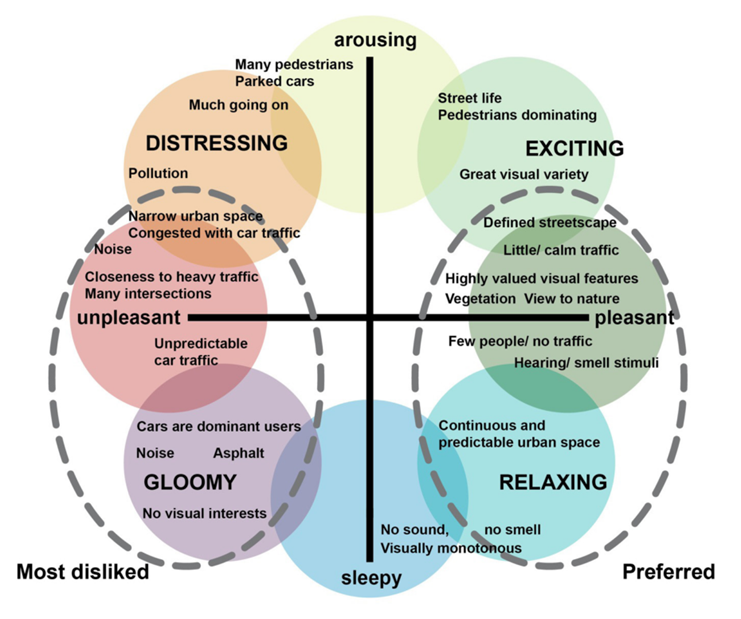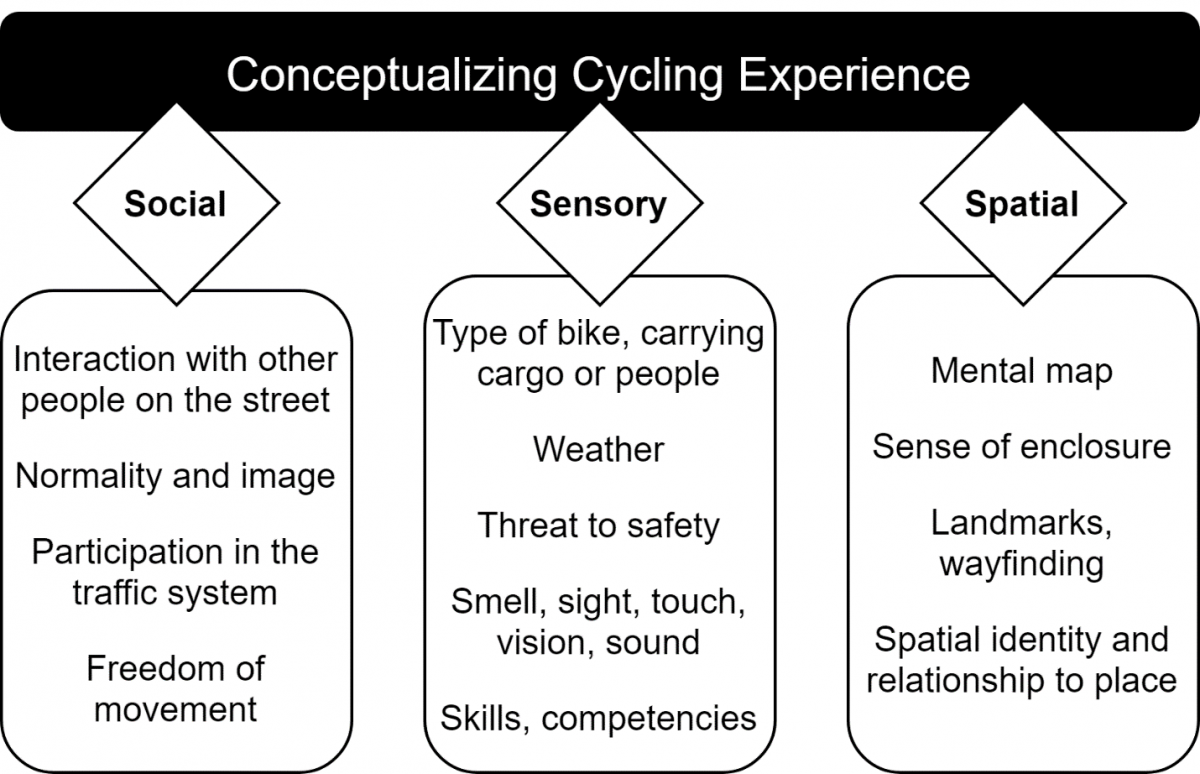
DCA blog by George Liu. This post is about the open-access scientific article: George Liu, Sukanya Krishnamurthy & Pieter van Wesemael (2018) Conceptualizing cycling experience in urban design research: a systematic literature review, Applied Mobilities, DOI: 10.1080/23800127.2018.1494347
The conversation about cycling infrastructure design tends to drift towards discussions about numeric indicators and concrete design. How wide should a bike path be? What is the peak capacity of this intersection? Asphalt or brick paving? These discussions tend to describe what is required to achieve some specified goal to resolve an issue caused by the existing transport system. Commonly cited reasons for increasing cycling include encouraging a healthy lifestyle, to fight congestion, to reduce air pollution, among other issues.
There are basically two ways to encourage cycling. 1) To make alternatives unattractive, or 2) to make cycling more attractive. We have devised all sorts of ways to discourage driving, such as by reducing parking, increasing cost of fuel, or reducing road capacity. How do we make cycling more attractive? We know the basics. Slow motorized vehicle traffic, build separated cycling infrastructure, ensure direct routes, make sure people feel safe.
Our implicit assumption is that these measures improve people’s cycling experience, thereby making cycling more attractive. But what is cycling experience, exactly? How do we measure these experiences? What is the relationship between cycling experience and infrastructural and environmental elements? We want to enrich the correlation literature (see Ma, Dill, & Mohr, 2014; Paige Willis, Manaugh, & El-Geneidy, 2013) by examining the relationship between experience and environment at the individual level, expanding on the work done by (Stefánsdóttir, 2014).

The first question is methodological: how do we measure cycling experience as a subjective phenomenon? I explored qualitative methods borrowing heavily from urban design literature and propose that we add these methods to our toolbox of existing quantitative methodologies for conducting cycling research. What most interests me the most is the section on visual methods. I am curious to explore the potential of combining interviews with ride-alongs and to see cycling experiences unfold before in real-time, where participants’ experiences are described on the move. These experiences can be mapped onto specific sections of routes and environments together with environmental typologies. With the help of post-ride interviews, differences between how environments are perceived real-time can be compared with how salient points along a route are remembered after the fact.
The second question relates to conceptualization: how do we describe and organize experiences in a meaningful way? I’ll quote directly from our paper here: “For the social experience, some factors appear to be presence of people on streets, society’s acceptance of cycling and the socio-economic characteristics of cyclists. Cycling is connected to experiences of social marginalization and neighbourhood quality whilst counting the presence of people on the street can be a proxy to measure how much people enjoy public space. For the sensory experience, some perspectives are equipmentality, weather, legibility and perceived safety. Flow and perceived safety frame an individual’s perception of the environment whilst interacting with more tangible perceptions such as noise, smells and weather. For the spatial experience, different scales of the city from architectural landmarks to streetscape design merge to produce the legibility of space as experienced through movement” (Liu et al., 2018).

What to investigate next? Methodologically, it will be very interesting to explore the use of virtual reality and 360-degree video to simulate and manipulate realistic cycling environments in a controlled laboratory environment. As technology improves, the video and audio will gain increasing fidelity and realism. For emulating rough roads, a rumble video game controller? For weather, a table fan and spray bottle? In terms of conceptualization, subjective experience of time is a key component missing from this paper. One route may feel shorter than another even though people can know, objectively, that the reverse is true. A curious oddity indeed. I’ll keep you updated on future projects!
REFERENCES Liu, G., Krishnamurthy, S., & van Wesemael, P. (2018). Conceptualizing cycling experience in urban design research: a systematic literature review. Applied Mobilities, 00(00), 1–17. https://doi.org/10.1080/23800127.2018.1494347 Ma, L., Dill, J., & Mohr, C. (2014). The objective versus the perceived environment: what matters for bicycling [PAYWALLED]? Transportation, 41(6), 1135–1152. https://doi.org/10.1007/s11116-014-9520-y Paige Willis, D., Manaugh, K., & El-Geneidy, A. (2013). Uniquely satisfied: Exploring cyclist satisfaction. Transportation Research Part F: Traffic Psychology and Behaviour, 18, 136–147. https://doi.org/10.1016/j.trf.2012.12.004 Stefánsdóttir, H. (2014). Urban routes and commuting bicyclists’ aesthetic experiences. FORMakademisk, 7(2), 21. Retrieved from http://dx.doi.org/10.7577/formakademisk.777

You must be logged in to post a comment.